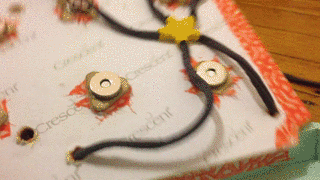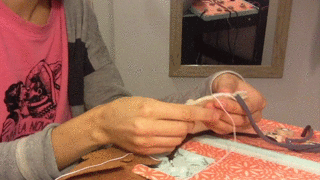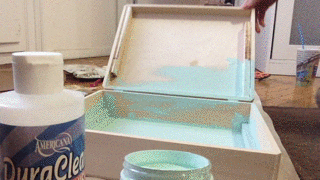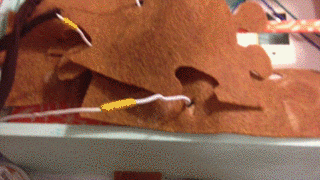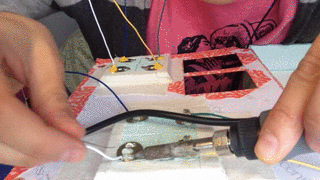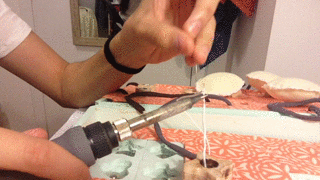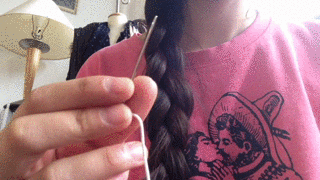– NYU ITP –
Prototyping electronic devices, interface & character design
December 2016
Cova’s Closet is a toy to teach kids combinatorics, showing them different outcomes depending on what they choose. It has a physical interface– that resembles a closet: a box with magnetic snap switches programmed to send 8 (4 outfit choices and different signals to a digital interface–in it Cova, a little girl in her room waits for the user to define what’s the day like and what she’ll be wearing. This project served as my Physical Computing and Introduction to Computational Media (ICM) finals.
Materials, tools and tech used
Electronics:
Arduino Uno (programmed in C++ on the Arduino IDE); Stranded wire; Magnetic snaps (used as switches); 10K Ohm resistors (see schematics and pinout diagrams below)
Digital Interface:
Designed in Illustrator; programmed in P5.js
Fabrication :
Wooden readymades: box, drawers and frame; pieces of cloth; hollow elastic ribbons; laser cut wooden parts.
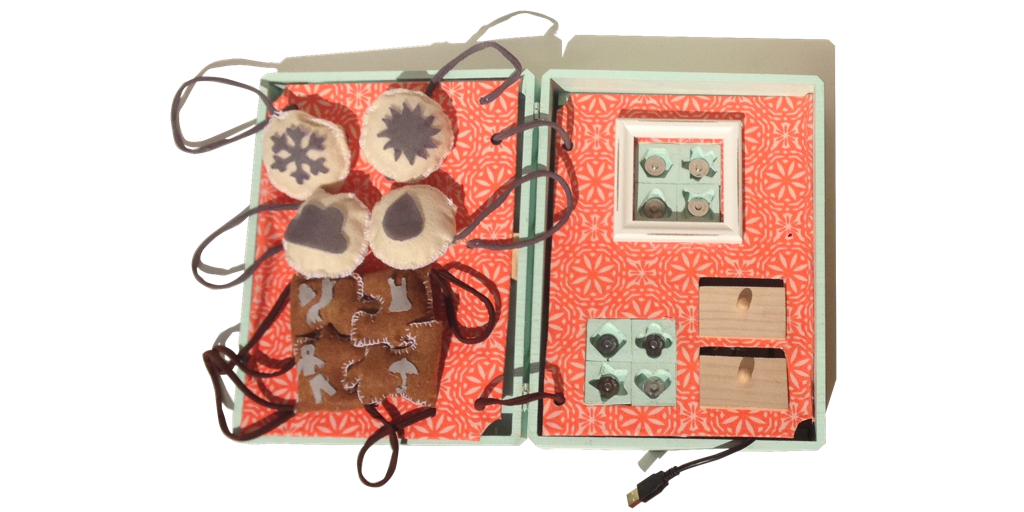
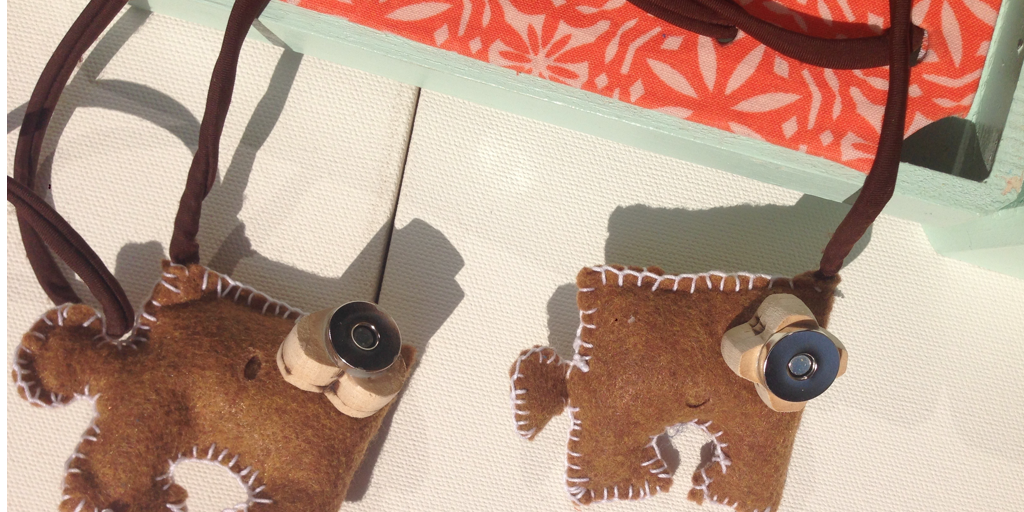
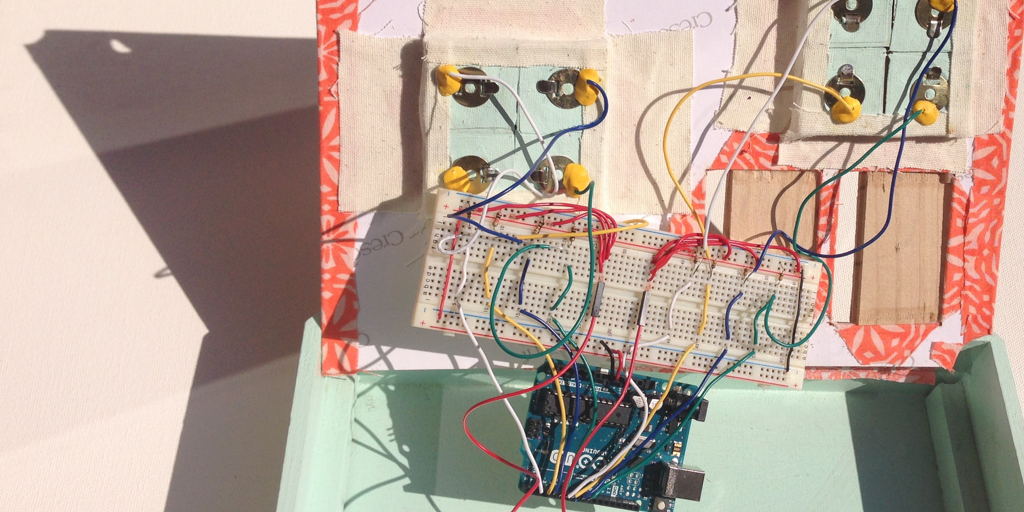
Special thanks to...
Sebastián Morales, Rushali Paratey and Jingwen Zu and Kat Sullivan for their tech aid; Paula Ceballos and Fran Rodríguez for their fabrication advice; my niece, Natalia, for user-testing, giving me feedback and being my model for the video (and everybody that helped me make this work!)
Branding
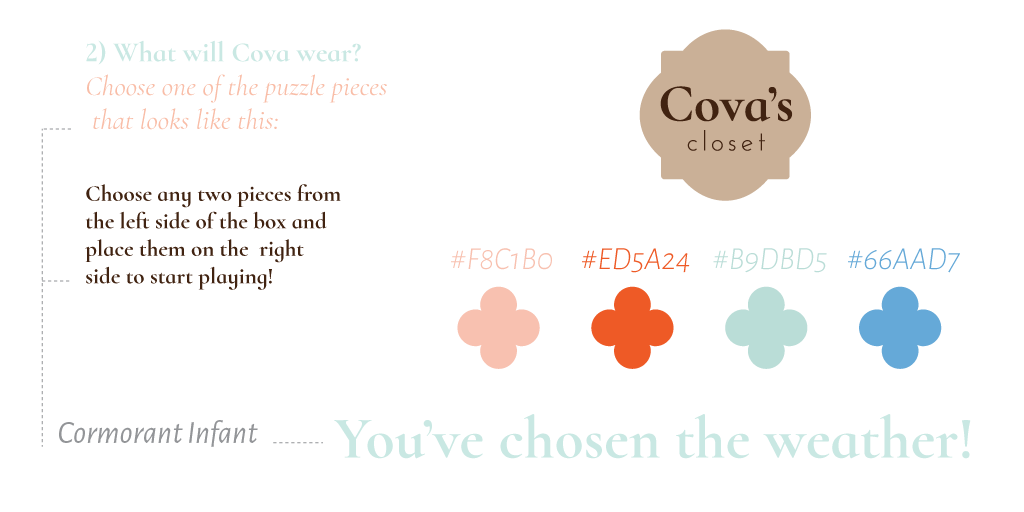
Inspiration
This prototype was strongly inspired by Linda Liukas’s beautiful Hello Ruby project.
To read more about this and other sources of inspiration, check my blog documentation, under “Conceptualization and Inspiration”.
Sketches, playtesting & trials




Schematics and other misc docs
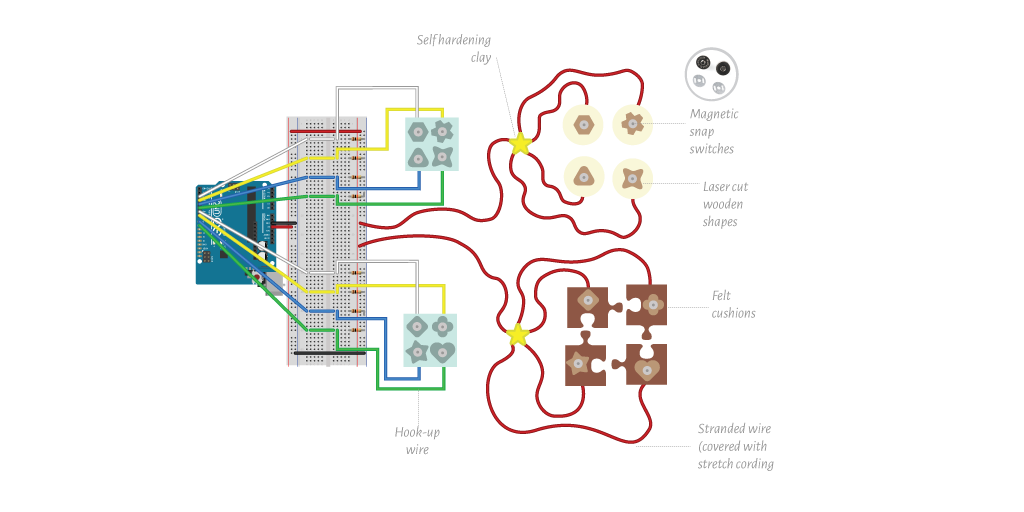
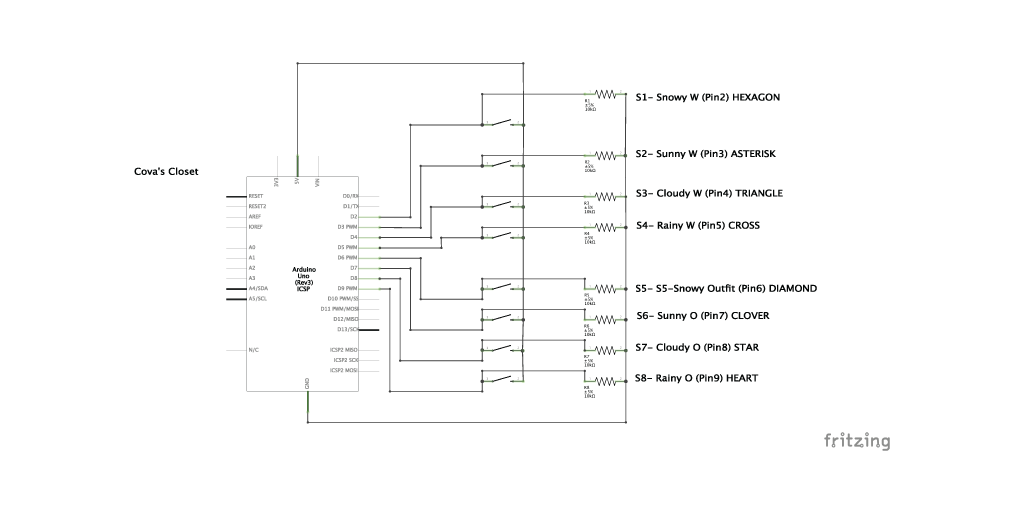
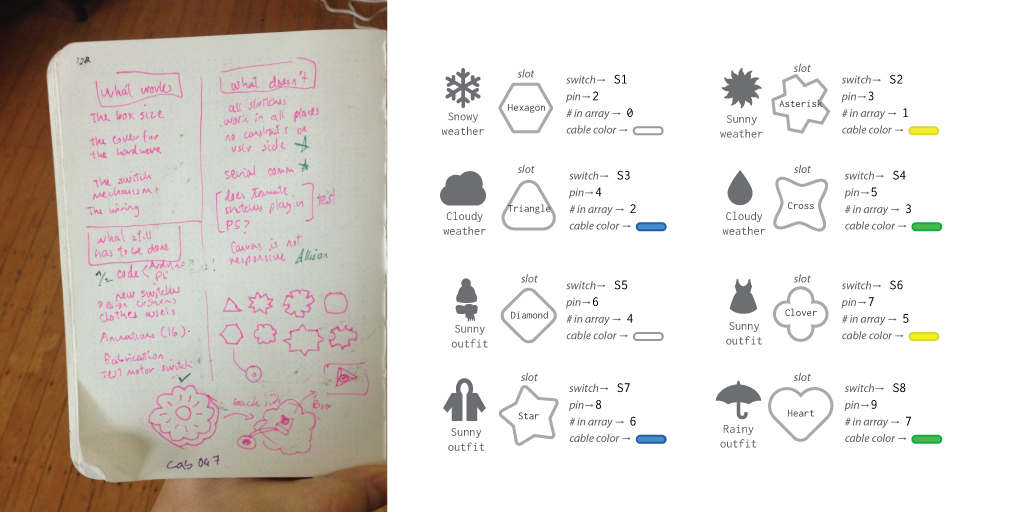
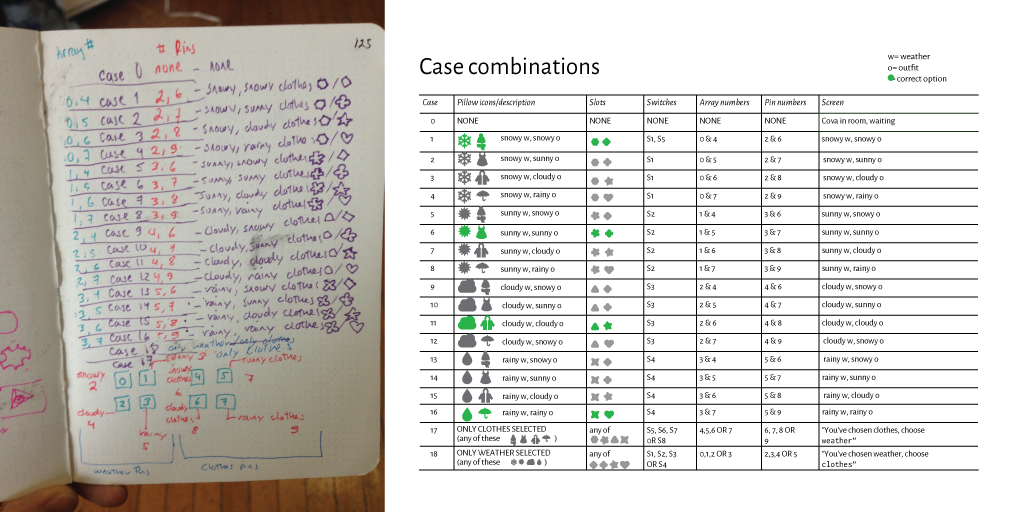
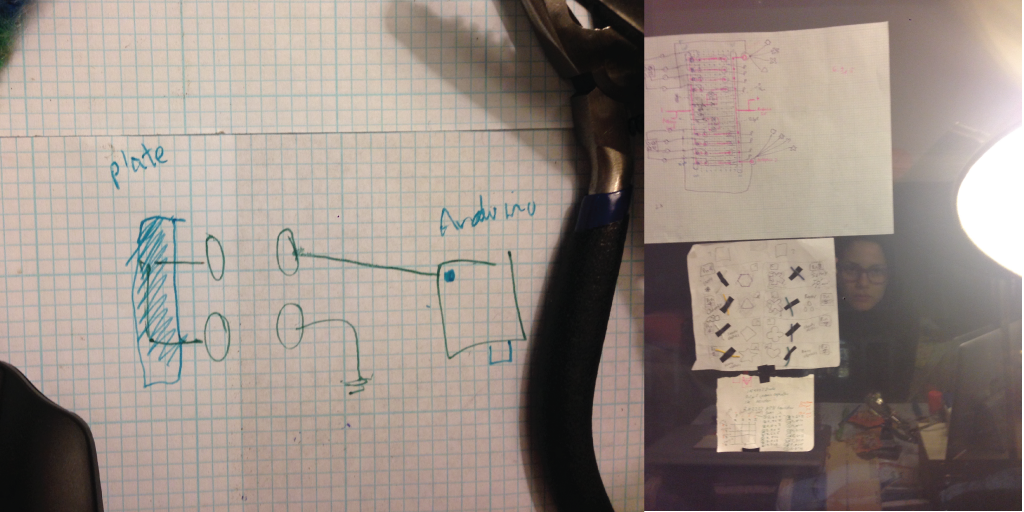
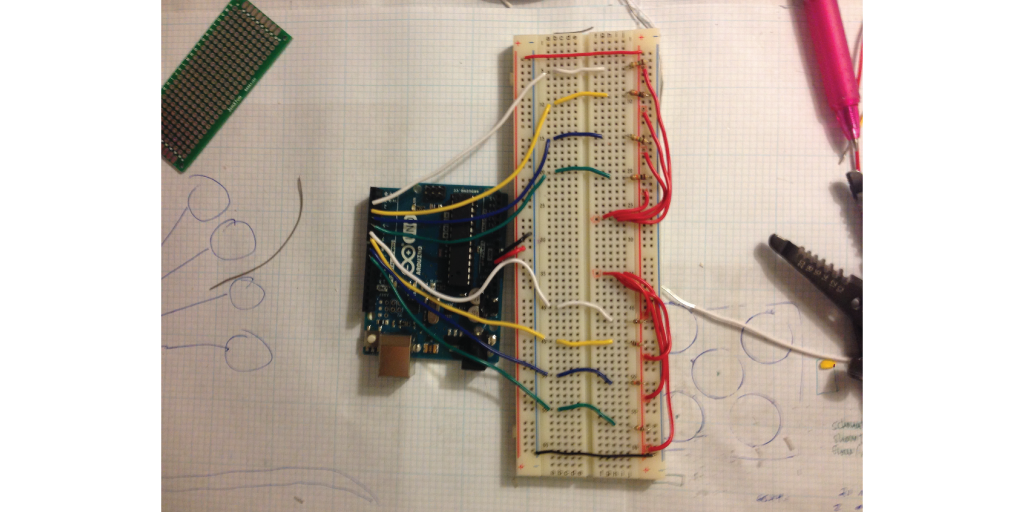
Interface and character design: cova



















For the working prototyped I presented as my Physical Computing final I borrowed visual asset’s of Ruby’s character from Linda Liuka’s site. Above are the images I used in the P5.js sketch. For future iterations I started the development of Cova and her clothes, but didn’t get as far as animating them. Below are some samples of the clothes and expressions I designed:
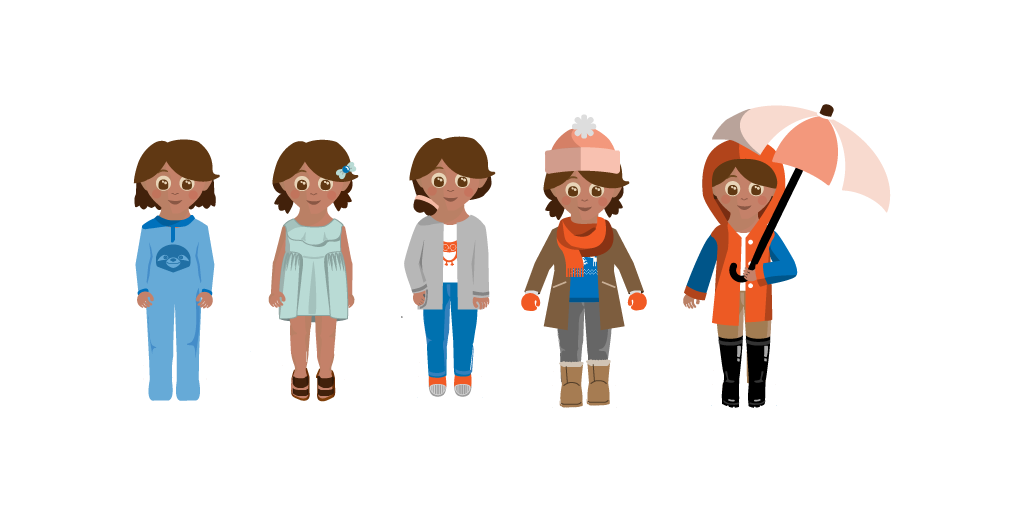
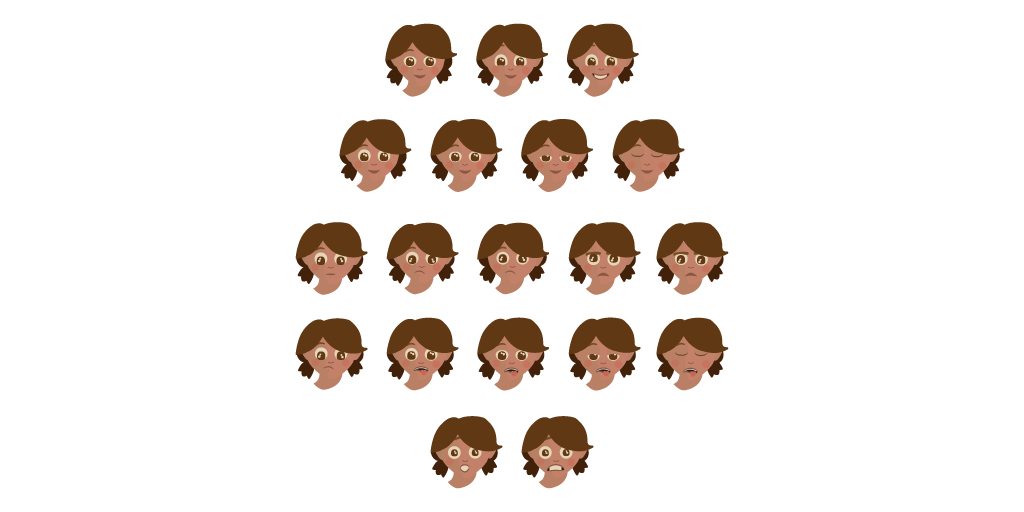
Fabrication
I spent a great deal of time fabricating the physical interface. Here are some snapshots of this part of the process:

